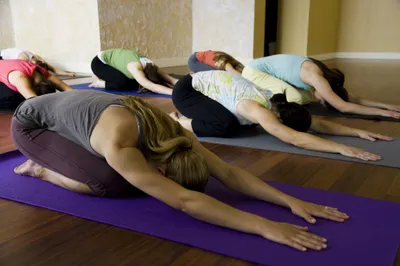If you practice yoga with a teacher, or practice along to a DVD series in the comfort of your own home, chances are the instructor concludes every practice with the saying, “Namaste”. It might leave you wondering what this much-used piece of yoga lingo actually means…
1. Namaste Meaning
According to the Yoga Journal, America’s foremost yoga publication, Namaste is literally broken down like this—“Nama” translates to “bow”, “as” translates to “I”, and finally “te” translates to “you”. Brought together Namaste can be interpreted as, “I bow to you.”
Using Namaste as a gesture to conclude a yoga practice may slightly differ between yoga practitioners. However, generally the term is meant to acknowledge the divine spark in everyone, or “the divine spark in me recognizes (or pays respect to) the divine spark in you.”
2. Namaste Origin
The Spiritual Science Research Foundation traces the term namastē, or namaskār, to a much-used greeting and parting phrase practiced in India and across the Indian subcontinent. Upon greeting one another, individuals will typically bow slightly, pressing their hands together with palms touching and fingers pointed upwards at the heart or mid chest.
The hand placement is significant as the hands are held at the heart chakra position, or the Namaskar Mudra. Namaste and namaskar are often used synonymously as a customary greeting and parting phrase meant to convey respect (although namaskar conveys deeper spiritual respect), blessing, and peace.
3. Namaste in Practice
Namaste spoken in yoga class is most often used as a respectful conclusion or ending to the class. Used in these terms, Namaste often symbolizes a “thank you,” with the teacher saying it to the class as they bow and the students responding.
Your teacher may also add variation to the parting saying something like, “the light in me bows to the light in you,” as they bow in Namaste with their hands pressed together at the heart chakra (Namaskar Mudra) followed by the third eye or forehead (Anjali Mudra or Pranamasana).
4. Performing Namaste
To perform a Namaste greeting or parting bring you hands in front of your mid-chest, or heart charka, with palms pressed together and fingers pointing straight up towards the ceiling. Close your eyes, bow the head slightly.
If you wish, you can also bring the hands up in front of the third eye (or Pranamasana) and bow slightly and then bring the hands down in front of the heart (or Namaskar Mudra) to show a deeper respect to your yoga teacher.
5. Namaste and the Heart Chakra
When we say, “Namaste” we position our pressed palms over the heart chakra (or Namaskar Mudra) in order to increase the flow of divine love. We bow our heads slightly and close our eyes in order to let our minds surrender fully to the divine spirit.
Likewise, bringing your pressed hands to the crown of your head (or third eye) is believed to increase the flow of divine psychic and spiritual connectedness. Each yoga chakra—the root chakra, the splenic chakra, the solar plexus chakra, the heart chakra, the throat chakra, the third eye chakra, and the crown chakra—are considered vital energy forces within the body.








